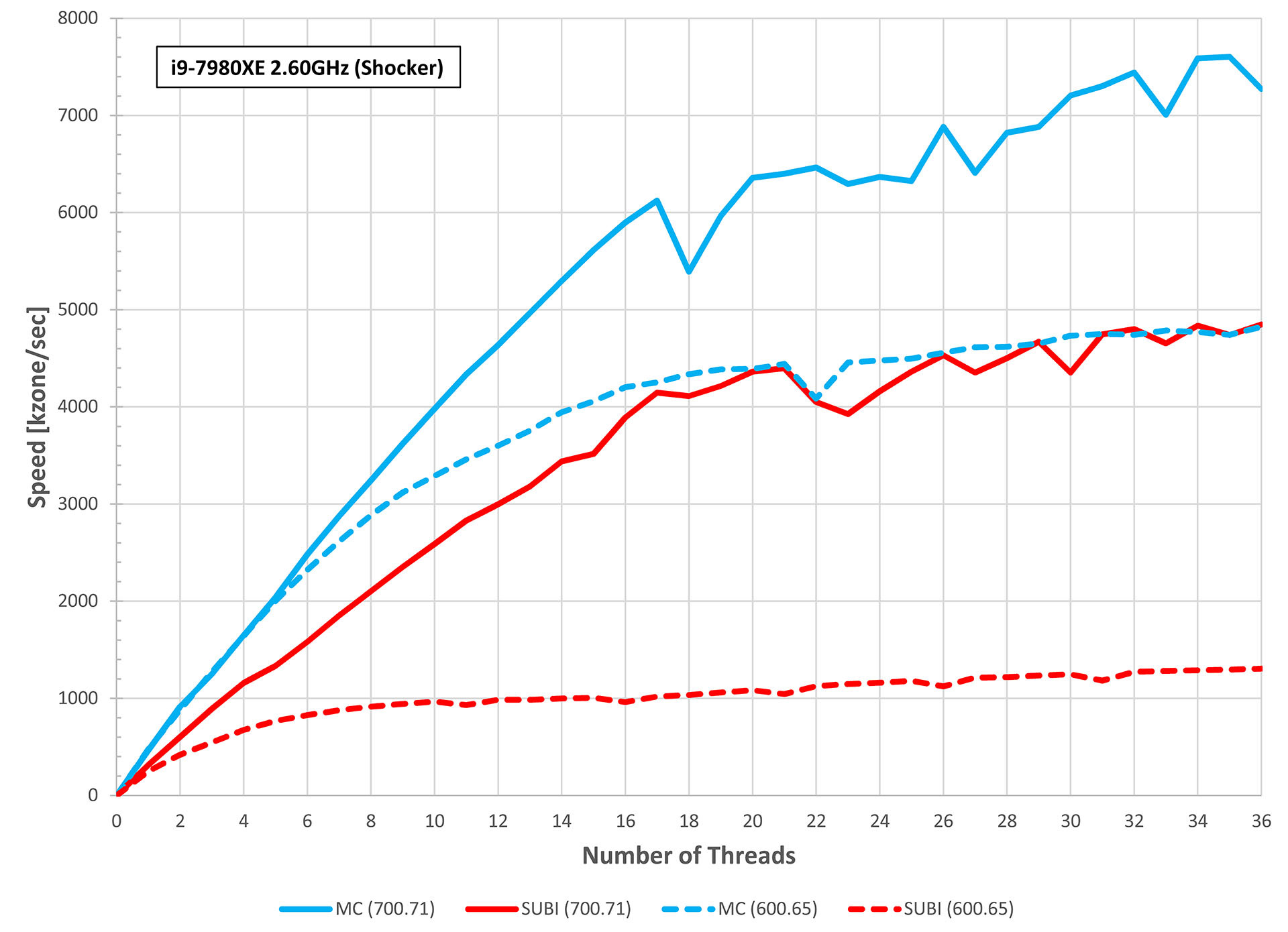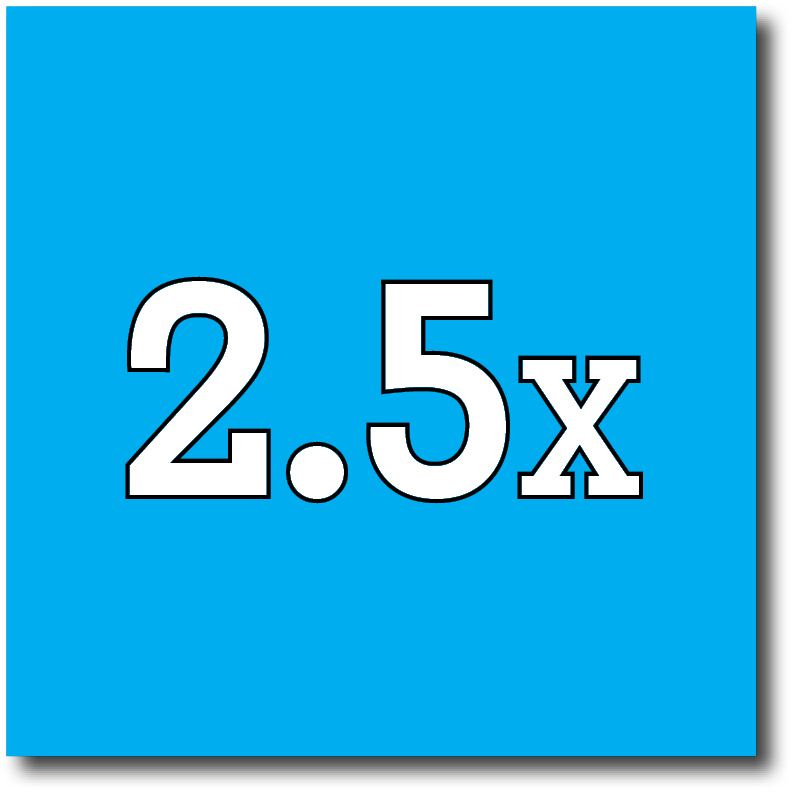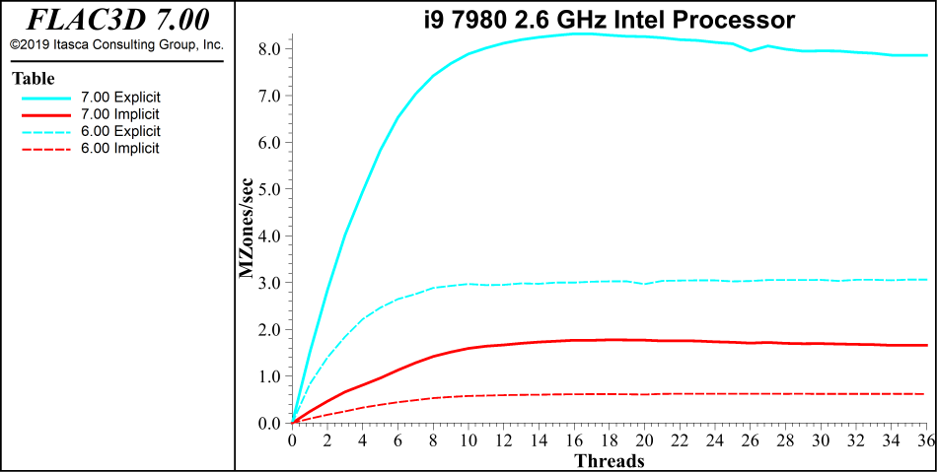FLAC3D 7 features significant enhancements for modeling solution run time. Increases in speed are gained because (1) more components are multi-threaded and (2) major updates have been made to FLAC3D's algorithms to improve performance on modern hardware configurations. FLAC3D 7 now has increased multi-threaded coverage for the thermal solution (option), attach logic, and FISH scripting. In addition, solution algorithms and optimizations have improved the attach logic and the mechanical, fluid, and thermal solutions. The actual speed improvements you experience will depend on your computer system(a),(b), but now you can get the maximum performance possible out of your hardware when working with FLAC3D 7.

MECHANICAL CALCULATIONS
The following chart shows the increase in mechanical calculation speed as the number of CPU cores increases. Overall performance depends on the constitutive model, with each one being optimized. The optimizations are derived from streamlining both the general calculations and the constitutive model calculations. Below, two constitutive models (Mohr-Coulomb (MC) and Strain-Softening Ubiquitous Joint (SUBI)) are compared between Version 6 (dashed curves) and Version 7 (solid curves). Mechanical calculation improvements averaging 70%(a) have been measured for FLAC3D 7. However, for the Strain-Softening Ubiquitous Joint constitutive model, the speed-up is closer to 400%. Structural elements (such as rock bolts, beams, and cables) demonstrate calculation improvements about 10% faster using FLAC3D 7.


FLUID CALCULATIONS
The following chart shows the increase in model fluid flow calculation performance as the number of CPU cores increase. Overall performance depends whether FLAC3D is using an explicit (blue curves) or implicit (red curves) finite-volume scheme. Version 6 (dashed curves) and Version 7 (solid curves) are compared and mechanical calculation improvements of 2.5x-3x(a) are observed for FLAC3D 7.


THERMAL CALCULATIONS
The thermal option of FLAC3D incorporates both conduction and advection models. The conduction models allow simulation of transient heat conduction in materials, and the development of thermally induced displacements and stresses. The advection model takes the transport of heat by convection into account; it can simulate temperature-dependent fluid density and thermal advection in the fluid.
In FLAC3D 7, the optional thermal solution has been re-optimized and multi-threaded, which has resulted in speed increases of 10x for explicit and 11x for implicit(a) solutions.

ATTACH LOGIC
The attach logic is used to rigidly attach (or slave) gridpoints on one zone to master gridpoints, edges, or faces of other zones. This allows complex grids that do not exactly topologically match to behave as a single grid. Each attached gridpoint results in the creation of an Attach Point that is accessible by command and by FISH. In FLAC3D 7, the attach logic has been re-optimized and multi-threaded, which has resulted in speed increases of 5x(b). The speed increase would be greater for larger, more complicated meshes that have been densified recursively many times.
The attach logic also now automatically skips interfaces and embedded liners, making creating complex densified meshes with interfaces and liners much easier.
Notes:
(a) 18-core i9 7980 2.6 GHz Intel processor; based on a two-million zone model as a benchmark for assessing model speed improvements.
(b) 10-core i9 computer; based on a two-million zone model as a benchmark for assessing model speed improvements.
